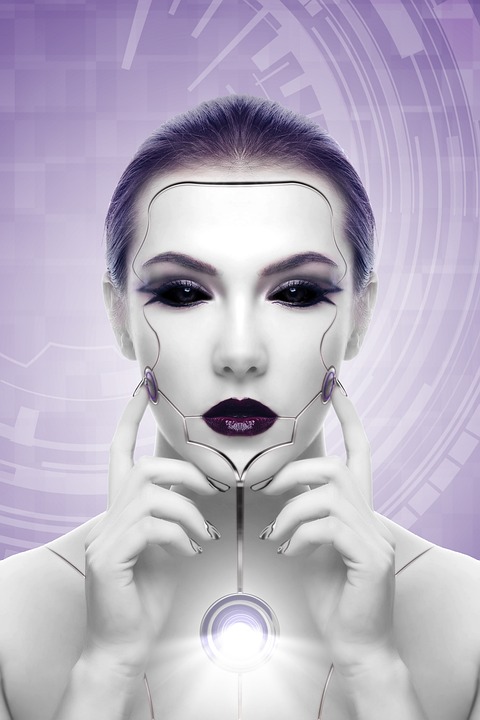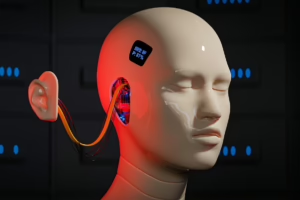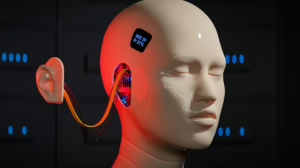Debunking Myths: What AI Can and Cannot Do Today
As artificial intelligence (AI) technology continues to advance at a rapid pace, a broad spectrum of beliefs and misconceptions has emerged around its capabilities and limitations. While AI promises to enhance numerous aspects of our lives, from automating mundane tasks to enabling sophisticated data analysis, various myths persist, clouding our understanding of what AI can actually achieve today. This article aims to clarify these myths and shed light on the current state of AI, debunking popular misconceptions while highlighting the real potential and limitations of this technology.
1. Introduction to AI Myths
The advent of AI has sparked both excitement and skepticism. Public discourse is often filled with exaggerated claims about AI’s capabilities, leading to unrealistic expectations and fears. From job displacement to ethical dilemmas, the conversation surrounding AI is fraught with misunderstandings that can hinder progress and informed decision-making.
In this article, we will explore several prominent myths about AI, addressing questions like: What are the real capabilities of AI today? Can AI think independently? Is AI a threat to human jobs? Through a balanced examination of these queries, we aim to provide a clearer picture of AI’s role in contemporary society.
2. Myth 1: AI Can Think Like Humans
Reality
One of the most common misconceptions about AI is that it can think and reason like a human. In reality, AI, particularly in its current forms, operates based on algorithms and statistical models rather than genuine understanding or consciousness. While advancements like Natural Language Processing (NLP) have made it possible for AI to engage in conversation and analyze text, these systems do not possess awareness or deep comprehension.
Algorithms drive AI without personal experience, intuition, or emotional intelligence. For instance, AI systems can process vast amounts of data, recognizing patterns that might elude human analysis, yet their operations remain deterministic. AI can generate text, answer questions, and even compose music; these tasks mimic human-like behaviors but do not involve cognitive processes akin to human thought.
Key Takeaway
AI is a powerful tool, but it lacks the emotional and cognitive nuances that characterize human thought. It excels in data processing and pattern recognition, but this does not equate to human-like thinking.
3. Myth 2: AI Will Replace All Human Jobs
Reality
The fear that AI will completely usurp human jobs is widespread, fueled by media narratives and sensational reports. While it is true that AI has the potential to automate certain tasks, the reality is more nuanced. Many researchers and experts argue that rather than replacing jobs outright, AI is more likely to transform the nature of work.
Automation and Labor
For instance, in industries such as manufacturing and logistics, AI can take over repetitive tasks, enabling human workers to concentrate on more complex issues. This is evident in businesses employing AI-driven robots to handle materials while human employees focus on oversight, strategic planning, and customer service.
Furthermore, AI can create new job opportunities that did not previously exist. As companies invest in AI technologies, there is a rising demand for AI specialists, data scientists, and ethicists who understand these platforms.
Key Takeaway
While AI may replace specific tasks, it is also creating new roles and opportunities, necessitating a shift in workforce skills rather than an outright loss of jobs.
4. Myth 3: All AI Is Superintelligent
Reality
Another prevalent myth is the belief that all AI systems are capable of superintelligence. Superintelligent AI refers to a hypothetical future scenario where AI possesses cognitive abilities far surpassing human intelligence. However, most AI systems in use today are classified as "narrow AI," meaning they are designed for specific tasks.
Narrow AI vs. General AI
Narrow AI can handle defined functions such as facial recognition or language translation, but it lacks the general reasoning skills found in humans. General AI, or AGI (Artificial General Intelligence), is still theoretical and remains a subject of extensive research and debate. Current AI capabilities, including deep learning and machine learning, are groundbreaking but constrained to their respective applications.
Key Takeaway
Most AI systems are limited to narrow functions and do not approach the level of general intelligence. The concept of superintelligent AI is a long-term hypothetical, not an immediate concern.
5. Myth 4: AI Is Infallible
Reality
The myth that AI is infallible stems from the perception that machines are inherently devoid of error. While AI systems can process data with precision, they are not immune to mistakes. Errors can arise from biased data sets, faulty algorithms, or misinterpretation of context.
Case Studies
A notable example is the issues surrounding facial recognition technology, which has exhibited bias against certain demographic groups due to flawed training data. These discrepancies can lead to wrongful accusations or misidentifications, perpetuating systemic inequalities. Similarly, AI used in healthcare can provide inaccurate diagnoses if the underlying data is incomplete or biased.
Key Takeaway
AI can enhance decision-making and efficiency but should not be regarded as foolproof. Human oversight remains crucial, particularly in high-stakes applications.
6. Myth 5: AI Can Solve Any Problem
Reality
There is a common belief that if a problem can be defined, AI can provide a solution. This notion underestimates the complexity and multifaceted nature of many real-world challenges. While AI excels at analyzing data and finding patterns, it is not equipped to handle every type of problem, especially those requiring ethical considerations or subjective judgment.
Examples of Limitations
For example, AI-driven systems in criminal justice can analyze past convictions to predict future criminal activity, but they cannot account for the inherent biases in historical data, nor can they consider the socio-political context that influences crime. Further, in creative fields, while AI can generate art or music based on input data, it lacks the emotional depth and unique insight that human artists provide.
Key Takeaway
AI can tackle specific data-driven tasks effectively, but it is not a universal problem solver. Complex human issues often require nuanced approaches beyond mere data analysis.
7. Myth 6: AI Understands Emotions
Reality
The belief that AI can comprehend and process human emotions is another prevalent myth. While advancements in affective computing have resulted in algorithms that can recognize emotional cues based on facial expressions or voice modulation, they do not “understand” emotions as humans do.
Emotional Intelligence vs. Emotional Recognition
AI can identify emotional trends through data, such as through sentiment analysis on social media posts, but this is not equivalent to emotional intelligence. Recognizing an emotion is not the same as empathetically understanding it. For instance, an AI system might detect that a customer is expressing frustration, but it lacks the ability to respond with empathy or compassion.
Key Takeaway
AI systems can analyze emotional data, but they do not possess emotional understanding or empathy.
8. Myth 7: AI Will Operate Independently
Reality
A misconception that often arises is that AI will eventually operate autonomously, free from human intervention. While certain AI systems can perform tasks with minimal oversight, they still require human input and monitoring to function effectively and responsibly.
Human Oversight
AI applications, particularly in critical sectors like healthcare, finance, and autonomous vehicles, necessitate robust human oversight. Improper training data, unexpected scenarios, or programming errors can lead to detrimental outcomes requiring immediate human intervention.
Key Takeaway
AI still lacks the capacity for true autonomy and requires human oversight and governance.
9. Conclusion
Understanding what AI can and cannot do today is vital for navigating its evolving landscape. By debunking these myths, we clarify the technology’s current capabilities and limitations, emphasizing a more nuanced view of AI’s role in society.
Moving Forward
The future of AI holds tremendous potential, but it also requires responsible development and ethical considerations. As we integrate AI into various sectors, it’s essential to cultivate a clear and realistic understanding of its abilities and constraints. By doing so, we can harness its power while effectively addressing the ethical, social, and economic implications it brings.
In conclusion, AI is a transformative technology that will continue to shape our lives in remarkable ways. By confronting misconceptions head-on, we pave the way for informed discussions and decisions that will ultimately guide the ethical advancement of AI technologies.
References
- Bostrom, N. (2014). Superintelligence: Paths, Dangers, Strategies. Oxford University Press.
- Russell, S., & Norvig, P. (2020). Artificial Intelligence: A Modern Approach. Pearson.
- Tegmark, M. (2017). Life 3.0: Being Human in the Age of Artificial Intelligence. Knopf.
- O’Neil, C. (2016). Weapons of Math Destruction: How Big Data Increases Inequality and Threatens Democracy. Crown Publishing Group.
- Amodei, D., & O’Rourke, S. (2016). “Building Safe AI.” Proceedings of the 31st Conference on Neural Information Processing Systems (NeurIPS).
This article provides a comprehensive overview, exploring both the promises and limitations of AI while debunking common myths. By fostering a better understanding of AI’s capabilities, we can engage more productively with this rapidly evolving technology.


























Add Comment